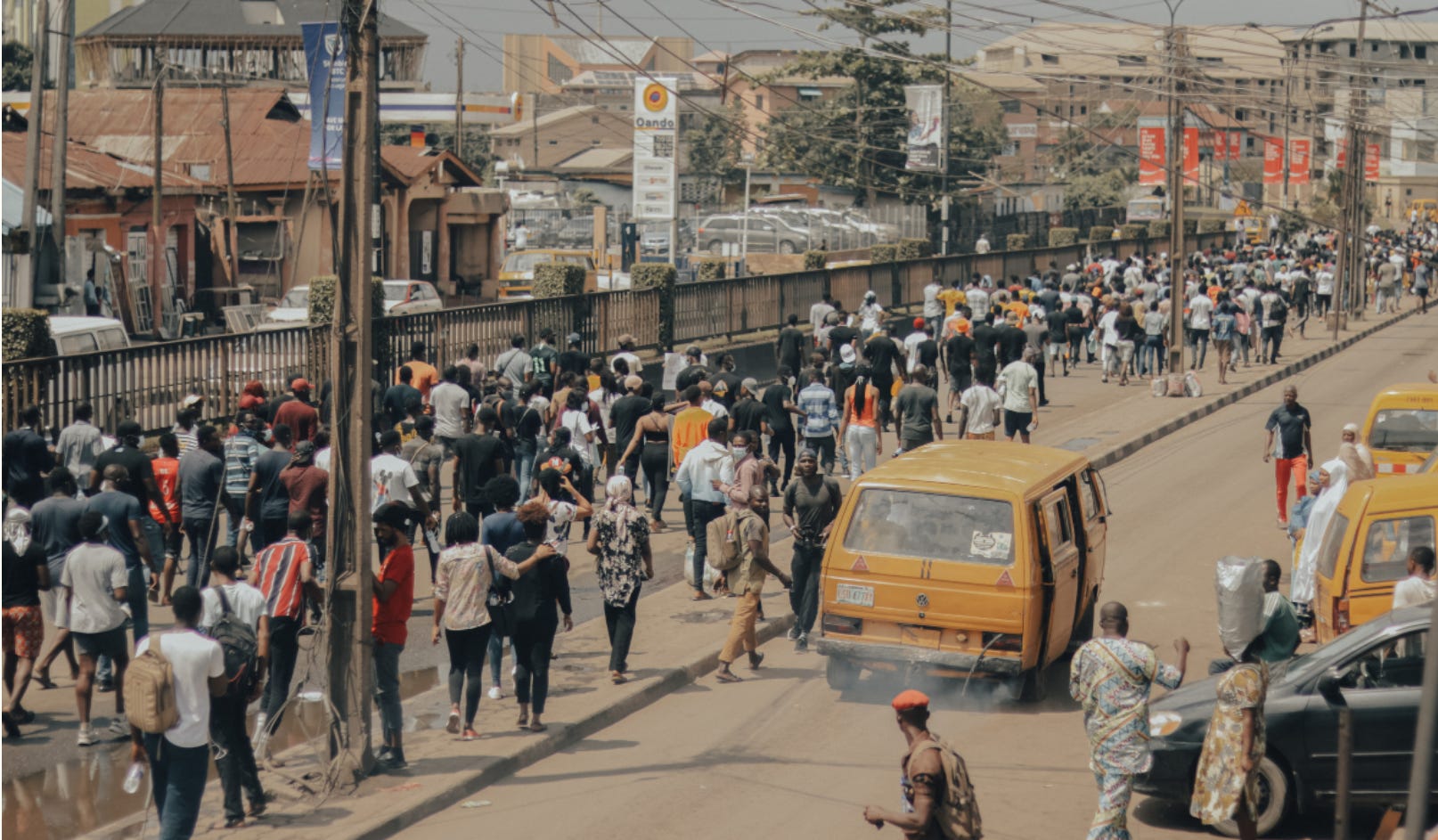The herd is grazing, the boy is standing. He rests his hands on a slender stick, which seems to give more authority than balance. He is dressed to stake a claim on confidence, on maturity: a wide-brimmed hat, the outline of a red wool cap, two layers of shirts, oversized plastic boots. The landscape is flat—well, not flat exactly, as he’s standing on a raised strip of farmland, on stalks leftover from a recent harvest. Behind him, there is a wide lowland rich in possibilities for his cattle, a route mapped by stories passed to him by his father. A boy with small eyes peering into the quiet of an encounter; his sepia-toned portrait asks the hurried question of what other futures are available to him.
Rachel Seidu: “Photography for me is showing the human in front of the camera without any kind of pretence.”
This photo was taken in Jangaringari, Gombe, Nigeria.
We were on our way to the village when we spotted cows and the young herdsmen taking care of them, so we walked over and asked to film them. Then I spotted him away from the herd, tending to his cows separately. So I walked up to him and signed with my hands that I wanted to take photos of him. And he nodded. Despite our language barrier, he was able to pose how I directed, and we were able to create intimate images.
This photograph is special because the language barrier didn't get in the way of telling the story of this young herdsman. I love how he posed with his staff in hand and how inquisitive his eyes are.
Photography for me is showing the human in front of the camera without any kind of pretence. Everyone in front of my lens, I try my best to humanize them, and not treat them like just another person being photographed.
Photography is the truth. It’s preserving history for the future. Without photography a big part of history would be forgotten.
Two more photographs by Rachel Seidu
In 2021, Rachel Seidu was featured in The Next Generation series by It’s Nice That, with which they “highlight the most promising creatives entering the creative industry in an explosive showcase alongside a collection of handy advice articles.” She’s described in that feature as having “an innate eye for captivating portraiture.” Here are two more of her photographs.
Last week — Namafu Amutse
I believe that photography has the ability to offer a paradigm for those at the receiving end to reach a certain level of self-actualisation. Photography is like a mirror offering a reflection to the viewer and this can influence and impact the ways in which we see ourselves and how it is we see each other.
Read more: Soft.
Support Rachel Seidu
Thank you for reading and sharing this feature. Follow Rachel on Instagram, and see more of her work on her website.
Support Tender Photo
Welcome, new subscribers! This is the 18th edition of the newsletter. Every week I feature one photograph and the photographer who took it. You’ll read a short caption from me, and a statement from the photographer. My goal is to set up conversations with the work of early to mid-career African photographers. You can support the newsletter by asking anyone—or 10 people!—interested in the impact and meanings of photography to subscribe. And, if you know of any photographer whose work is deserving of attention, please email me with their name(s).
What readers are saying:
The second and third photos are somehow linked for me, the young men leaving behind a still lit fire, the older man on a bed, left alone. I once thought of starting a photography and poetry project around the question: What happens to what is left behind? After the photographers, the news and the people have moved on, how do the people that cannot move on live? — Chika Jones, on “We Are Dreaming Again” by Omorogie Osakpolor.








Don’t those cattle look insanely thin?
Grazing and gazing. I'm transfixed by this portrait of the cowherd in his black stallion print shirt, ramrod straight against the tree, hands crossed on the staff, gazing straight into the lens. A true tender portrait.